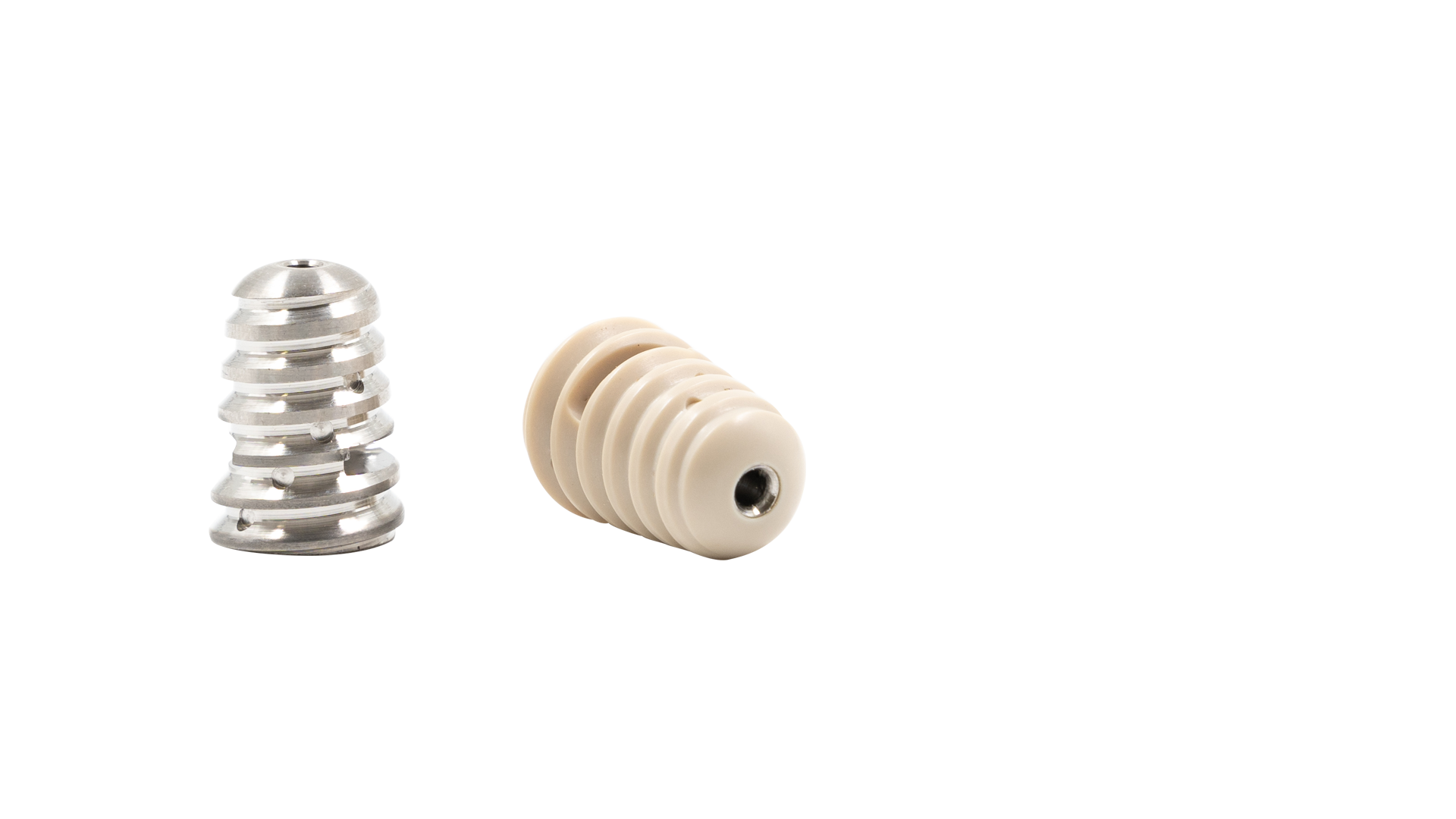
BIOPLAN
Features
- Clear radiological identification
- Elimination of pathology through accurate and correct conformation
- Range of material and sizing options
The BIOPLAN Device
This ankle and foot orthopaedic implant is used for the correction of flat foot pathology in child, adolescent, or adult patients. The full list of conditions this system can treat includes:
- Congenital pronated valgus foot in children and young adults.
- Feet exhibiting painful or paralytic symptoms.
- Posterior tibial inflammation (tendonitis).
- Unstable adult foot in association with heel medial osteotomies.
- Failure of a long-term non-invasive orthopaedic treatment (mattress, insoles etc).
- Subtalar instability.
The BIOPLAN system contains seven implants each of titanium alloy and PEEK (polyether ether ketone). These implants range in diameter from 7-13mm and lengths between 13-19mm, to allow for accommodation within a range of patient anatomy. These implants are designed to be inserted into the tarsal cavity, providing stability to the talus and calcaneus. In addition, this system contains the following instrumentation:
- Trial sizers in the appropriate range of sizes.
- Quick coupling handle.
- Inserter and extractor screwdriver.
- 2mm diameter guide wire.
- Push wire.
- Probe.
Interested in the BIOPLAN?

BRM Extremities is a company dedicated to the design and production of orthopaedic devices for use in the extremities, both upper and lower. They combine modern technologies with extensive medical knowledge to support public and private healthcare professionals. The mission of BRM Extremities is to create a catalogue of quality medical devices that can respond to the increasing demands of the orthopaedic sector. The company is certified to ISO 13485: 2016 and ISO 9001: 2015 standards and is aware of relevant device regulations in the FDA, CE and ANVISA fields.
Frequently Asked Questions
Limited weight support can be provided through a foot plaster cast, which can be removed after 2-4 weeks depending on the patient. In most cases, the person’s regular activities can be resumed after 4-6 weeks. Although this time frame can be extended depending on certain factors affecting the patient, such as age and underlying health conditions.
As the name of the condition suggests, flat feet do not exhibit an ‘arch’ on the inside of the foot. Instead, the sole of the foot lies flat to the ground. This can be more easily identified when standing as it places more weight on the foot. A collapse of the arches in the feet can happen dramatically following an injury, or over time due to gradual wear and tear.